The latest tool or a new book will definitely make the season merrier for the gardener on your gift list. And, if you’re a gardener who has received a gift card, why not put it to good use and treat yourself to one of the newest products?
Occasionally, I discover a new gardening tool that I wish I’d had years ago. The Nut Wizard (item NWW, amleo.com, $64.99) certainly qualifies. I got an immediate assessment on my purchase from my teenaged garden helpers, who pronounced it “awesome” and “radical.” For decades, I’ve been faced with bending and picking up countless bushels of walnuts and their indelibly-staining hulls dropped alternate years by the giant walnut tree that stands just outside my porch and extends over the driveway. With this device, one stands upright and simply rolls it over the nuts lying on the ground; the spring-wire head traps them inside. It is emptied by spreading the wire, which allows the captured thugs to fall right out. It can also be used for sweet-gum balls. There are other versions sized for hickory nuts, buckeyes, acorns and crabapples.
I never go into my garden without my favorite digging tool, the Offset Soil Knife (Item DT 1, amleo.com, $46.49). Every gardener I’ve recommended it to agrees it is indispensible. OK, you can get the cheaper Classic straight soil knife for less than half that price (and I do provide those to my helpers), but the offset design is well worth the extra change, especially for gardeners with small hands. The Offset is more ergonomic and offers extra digging power when slicing into soil. The sharp-serrated edge easily cuts right through roots. It is ideal in my beds since I mulch with stone gravel.
I use my digging tool constantly since weeding is an inescapable task in our ornamental borders, even for those who misguidedly think mulching is the answer. I prefer to weed on my knees so that my back is comfortably flexed and all the little villains are within reach. Because it’s only good sense to protect one’s knees – regardless of age – I’ve tried a number of hard-plastic knee guards and found them unsatisfactory. They do protect the knee cap and joint, but are usually held in place by a pair of straps that bind uncomfortably and impede circulation. However, I found a type of gel kneepads by Asics that are designed for volleyball and are available at chain sporting-goods stores. They provide full and very comfortable protection, are washable and can be worn over or under jeans. I usually wear out a pair each gardening season. But, for under $20, they protect my knees from wayward ground rocks.
In recent years, Nitrile gardening gloves have become widely available. These tough and durable gloves fit like a second skin and are perfect for weeding (however, thorns will penetrate them). The back is usually a nylon-knit fabric that lets skin breathe. The gloves are machine washable. I’ve used the ones made by Atlas; be aware that two styles exist: Touch and Tough. The latter costs a bit more, but is more durable. Two pairs will get me through a long season of garden work (provided I don’t misplace any!). Lots of online sources.
Most avid gardeners will insist that Felco Pruners are the best (though there are many other, more economical, well-made pruners out there). One reason Felcos are so liked is that replacement parts (blades, pivot assembly, springs) are available to keep them in like-new condition. On my holster for decades has been the model #6, which is ideal for smaller hands. And, take note: There is a left-handed model, a cherished item for southpaws.
I’ve used my heavily built lopper for so long that I don’t remember its source. It continues to serve because I never let anyone else use it. Be aware: loppers should be used only for the size of branch for which they are designed, otherwise there is the inclination to apply a twisting motion to get through the wood and that warps the blades. For light gardening duties (1.5-inch twig capacity), I recently came upon a “telescoping” lopper made by Dramm. By a simple turning and pulling action, the handles extend from 24 to 31 inches for farther-away pruning. I also like the lightweight aluminum construction for less fatigue, as well as the non-slip rubber grips. Dramm.com, fine gardening centers and ACE Hardware stores.
Another nifty product from Dramm is its One Touch™ Shower & Stream™ hose nozzle. It has a clever, thumb-controlled shut-off valve and provides the only two patterns one actually uses. It is made from heavy-duty metal, not plastic, and has an ergonomic design.
In past seasons that were dry, I was stymied by why the rectangular, oscillating-type sprinklers for covering large areas always failed. They would work briefly, but then the water pressure would drop off. After blaming several as faulty, I learned this is a common problem with this design when home water service is pumped from wells. However, the
spinning or impulse-type sprinklers work very well. Again, Dramm makes one that creates a fine mist spray that requires less water for thorough watering, plus it works with low water pressure. It is made from metal and colorful models are available with circular, stake or wheeled bases.
For smaller watering jobs, Dramm offers two-, five- and 10-liter watering cans made from injection-molded plastic. A friend with arthritis is delighted with its nicely balanced design.
Readers with larger country properties must deal with invasives like multiflora rose, autumn olive (Elaeagnus umbellata), tree-of-heaven (Ailanthus altissima) and honeysuckle (Lonicera). Our native sassafras is particularly hard to pull because of the long tap roots. Over the past 20 years, I’ve triumphed over all these saplings with the WeedWrench. It was offered by only one manufacturer, which has recently ceased business. However, a similar device appears to be the UpRooter (theuprooter.com). These implements are mechanical pulleys that allow for the easy extraction of saplings. (They should to be used with full attention because an assistant’s hand could be easily crushed.) Although this is a rather expensive tool, it is indestructible. I recommend that gardening friends simply buy it collectively and pass it around.
Another tool for the tough jobs of pulling small stumps and brush up to three inches in size is the Sure-Grip Brush Grubber (item BG01, amleo.com. $64.99). To use it, you need a tractor, a chain and a very strong helper. Its strong teeth do not slip; they grip tighter as you pull. Another tool one can share.
For armchair gardening during the winter, the one book to read is the new release by Rick Darke and Doug Tallamy: The Living Landscape: Designing for Beauty and Biodiversity in the Home Garden. I recommend any books by these visionary authors; this comprehensive book offers their guidance on creating a home garden that’s part of the larger ecological landscape. (Timber Press, ISBN 978 1 60469 408 6).
Finally, I asked a well-known gardener and writer what her favorite tools might be, hoping for a new find. Her response: “My favorite garden tool is a strong helper who will do all the hard work.” Actually her witty response isn’t a bad idea: why not give a gift of a few hours of your time to help a gardening friend come spring?

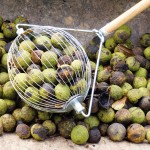
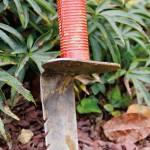

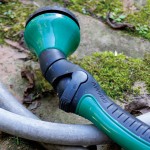
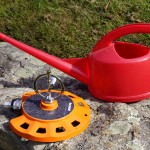
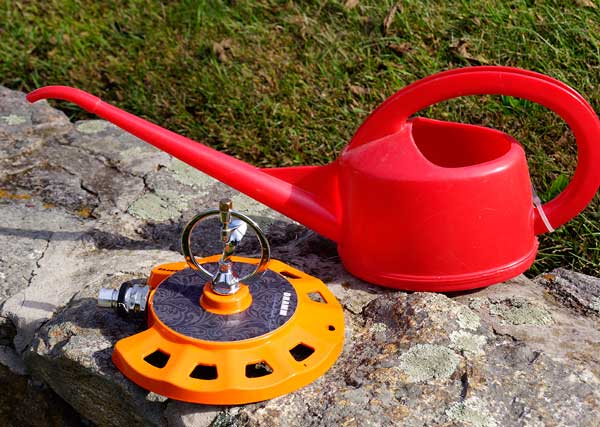
Hi Richard, love your gift list for gardeners. Thanks 🙂